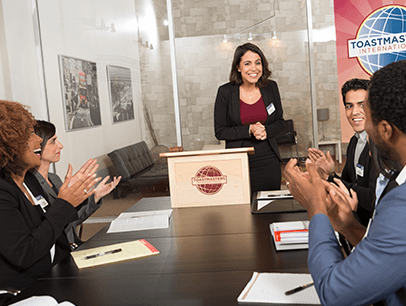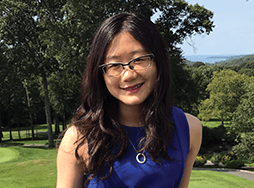In any given Toastmasters club around the world today there can be as many as five distinct generations of members. This means there is a tremendous opportunity for growth and understanding. We learn from our fellow members; we teach, inspire, and encourage each other. Having a wide range of ages in a club brings fresh opportunities to work and learn from each other in a safe environment.
“In our club we have a lot of generational diversity, which is amazing. I am inspired by the passion my fellow club members, both older and younger than myself, have for Toastmasters,” says Eugene Law, 25, a member of Brock Toastmasters in St. Catharines, Ontario, Canada.
When clubs intentionally seek out members with a wide range of ages—and work to maintain that variety—they gain a depth of experience, along with a solid base of members. Members of different generations offer diverse perspectives and skills, largely based on their life experiences, the times in which they’ve lived, and the culture that has surrounded them.

The chart above shows the generally accepted names and age ranges of five generations, the youngest being born in 2010.
Avoid the Stereotypes
If you’re a 55-year-old and walk into a Toastmasters club that has members in their 20s, it’s understandable that you might feel out of place. However, it’s important not to fall prey to stereotypes and assume you won’t have anything in common with people in different generations. In fact, you’ll likely learn more about some things than you would if you stuck with your own age group.
Certainly, the rise of the internet and mobile phones have had a dramatic impact on the way we communicate. While the rate of adaptation varies around the world, one thing that holds true everywhere is a difference in comfort levels with technology among the generations. Many millennials and Gen Zers have grown up with the internet as an essential part of their lives, and this has shaped and influenced their expectations in a variety of ways. They may have less experience with face-to-face communication and many may have shorter attention spans.

Different generations might have different expectations and ways of communicating, but no method is inherently better than another. Just because another club member does something differently than you might, doesn’t mean they are doing it wrong. For instance, the social media of Gen Z offers new opportunities, but a traditional newsletter has a place as well.
Younger generations also tend to be less formal and more direct. As millennial Andrew Tsuro, DTM, a District 74 leader and CEO of The eHub, an organization that provides professional coaching and training to South African entrepreneurs, observes, “I also recognize that we question a lot of the formalities, like the need to use a gavel at a meeting. Why is that still necessary?” Observations like this present a great opportunity for clubs to ensure the club’s practices are meeting and reflecting the needs of their members.
But again, it’s important not to make assumptions. Just because a new member is in their early 20s doesn’t necessarily mean they “live” on social media. Or that a 55-year-old has no idea how to use TikTok.
Find the Common Ground
Regardless of age, people join Toastmasters with a common goal: to improve their communication and leadership skills in order to gain more opportunities. And no matter what a person’s ability or confidence level, Toastmasters provides the opportunity for every member to realize their full potential. Technology may have made a drastic change to the way we communicate, but it hasn’t changed the mission of a club. This common ground provides a bridge between the generations in a Toastmasters club.
“I am in Toastmasters to prepare myself for every personal and professional assignment I will have to take on in the outside world,” says Tsuro, echoing a common goal of members for the past 98 years.
Think of each Toastmasters club as its own team. Everyone on that team brings different skills, experiences, and expectations. There are veterans, rookies, and everyone in between. This spectrum of skills and experience adds greatly to the fabric of the “team.”
Like any team, the aim is to achieve your goals (and have some fun along the way). In Toastmasters, the team wins when members reach their objectives. As each member grows and succeeds, the entire team (club) also succeeds.

The question is, how can you get all generations to work together, so everyone on the team wins?
It helps to understand the strengths, background, and expectations of each member, and each generation.
Phil Gwoke is a writer, market researcher, and managing director of Bridgeworks, a company that helps people realize the value each generation brings to the workforce. In his 2021 Toastmasters International Convention presentation “When Generations Connect,” Gwoke points out that it is experiences that shape each generation, not simply age. This goes a long way to explaining the “why” of a member’s actions.
“Different experiences result in different styles of communication,” says Gwoke. “The more we understand about where people are coming from and what shaped them, the more effective we can be in delivering our message to them.”
This understanding and appreciating of experiences opens tremendous opportunities for growth and development.
Create a Supportive Environment
When looking to attract younger generations to your club, stress the mutually supportive atmosphere. Members are free to make mistakes, thereby learning and growing, without fear of how that may look to their boss or superiors. Clubs also offer a unique opportunity for members of all generations to work together and learn from each other.
Millennial Amanda Mae Gray, the host of the Yes You Mae podcast and a member of Toast of Cobb Toastmasters and Speakers Roundtable Advanced Club, both in Georgia, says, “At Toastmasters you have a whole bunch of support from people of all ages and walks of life.”
She was also pleasantly surprised to find the opportunities with Toastmasters to improve her leadership skills. “It’s like an on-the-job training that you are very supported in.”
Generational diversity also expands the opportunities for mentoring, a vital part of every Toastmaster’s journey. Traditionally, mentorships are seen as an older person guiding a younger person, imparting their knowledge and experience.
However, Toastmasters offers an opportunity for what is known as reverse mentoring. In this situation, a member from a younger generation acts as a mentor to an older member. While the ages may be reversed, the goal is still the same—to help the mentee become more comfortable and confident in a new situation.

Having an open mind in reverse mentoring is vital for both the mentor and the mentee. The benefits, however, are undeniable.
Patrice Gordon, an executive coach and personal development advocate, talks about this in her video for TED’s “The Way We Work” series. “You [the mentee] have to be genuinely curious about learning from that individual [the mentor] and have to be intentional about the relationship in order to make it work.”
Of course, reverse mentoring works outside the club setting as well, in the workplace and in everyday life. A baby boomer learns how to set up a podcast, or a Gen Xer masters Instagram.
Law shares an example of reverse mentorship he saw in his club.
“We had an older guest attend a meeting. A younger member was eager to mentor and provide guidance to this guest on all things Toastmasters. The older member later delivered a memorable Ice Breaker, and expressed his appreciation toward the younger member for taking time outside the regular meeting time to work with him on preparing his speech.
“I believe that the mentorship from the younger member helped the older member become more confident in delivering his speech and feeling supported and encouraged in the new Toastmasters club environment.”
Each generation brings different experiences and perspectives. By remaining flexible and open to people of all ages, clubs thrive.
As your club grows, so will its members. As Gray, the podcast host, says “I help people get what they need and in return get the help I need. We each bring skills and knowledge to the club, which provide amazing benefits.”
So rather than fear generational diversity, embrace it. Whether you are in your 20s, 40s, or 80s, there are learning opportunities for everyone. When we view our fellow members with openness and a keen desire to learn and teach, we all win!
Greg Lewis, DTM is a retired business professional who strives to inspire and encourage his fellow Toastmasters. He and his family live in Fonthill, Ontario, Canada.



 Previous
Previous

 How to Make Your Club More Inviting
How to Make Your Club More Inviting
 Previous Article
Previous Article


